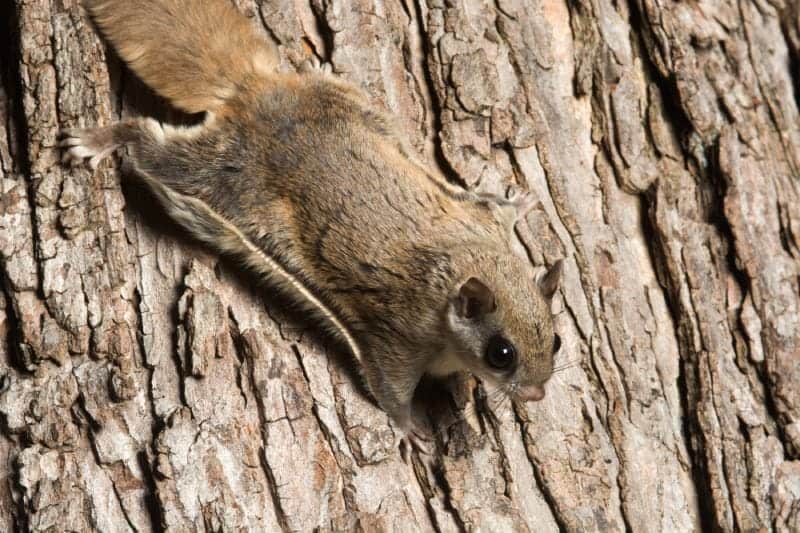The Southern Flying Squirrel or American Flying Squirrel is the squirrel most commonly found available in the U.S. pet trade. They are the littlest of the squirrel species with only a 3-4 inch long body. Their tiny size, along with a natural tendency to want to rustle around or even snuggle up and sleep in your pocket, makes the Flying Squirrel a perfect “pocket pet”.
At first, Flying Squirrels are very shy when meeting new people. A young squirrel that has been raised in captivity or taken from its mother at weaning time will accept handling the easiest.
Flying Squirrels are nocturnal so after sleeping all day, these little fellows will be very playful and full of energy from dusk to dawn. To keep their muscles strong they not only need places to play, but need a regular opportunity to glide. Putting your pet up on a high shelf and letting it glide back to you will be rewarding for both of you!
- For more information about the care of Flying Squirrels see: Guide to a Happy, Healthy Squirrel
Scientific Classification
| Kingdom: | Animalia |
| Phylum: | Chordata |
| Class: | Mammalia |
| Order: | Rodentia |
| Family: | Sciuridae |
| Genus: | Glaucomys |
| Species: | volans |
Scientific name
Background
Southern Flying Squirrels are found mostly in the Eastern part of North America, inhabiting parts of Canada, the United States, and Mexico.
Description
Southern Flying Squirrels or American Flying Squirrels are just 7-8 inches long (with 4″ of that being the tail), and they weigh just 3 ounces when fully grown. Flying Squirrels have a furred membrane of skin that stretches from their forefeet to their hind feet which allows them to glide from tree branch to tree branch, thus their name “flying squirrel”.
Their fur is silky and has a soft dense undercoat. The overall appearance of their fur is mostly rusty-brown or grayish-red, with a lightly colored underbelly. But upon close inspection, the hair is actually a mixture of several colors including gray, red, and beige, and there is a soft gray undercoat. They rest in the hollows of trees during the daytime, and will search the treetops for food after dark. Their natural foods consist of insects, birds’ eggs, nuts and various kinds of fruits.
They not only have 20 regular teeth, but like all rodents, they have sharp incisors that continually grow, and will need hard chews to keep them worn down. The female will produce a litter of three to six young twice a year.
Interesting Facts
- The furred membrane of skin they can stretch out parachute-like, enables them to glide for long distances through tall trees – sometimes up to 160 feet! They often make sharp turns just before landing.
- Flying Squirrels are nocturnal, meaning that they sleep during the day and are active at night. This means they have to watch out for night predators, such as owls.
- They live in very tall trees since their primary means of traveling is by gliding, and they are awkward on the ground. They don’t have to worry about ground predators, but they do have to be wary of such animals as hawks.
- With their natural instinct being to save up foods for the winter, they are very active hoarders. Make sure to check their nest regularly to discard any perishables!
- Besides needing to chew regularly to keep their incisors trim, Flying Squirrels need extra calcium. Sterilized bones and pieces of deer antler work great for both these needs.
Featured Image Credit: Tony Campbell, Shutterstock
